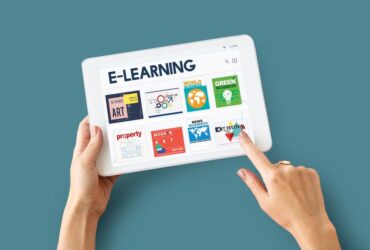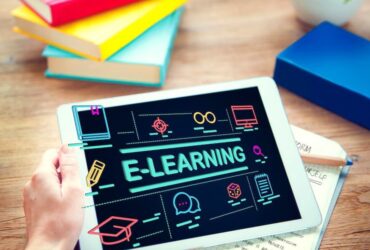To improve online education, engage students with interactive content and personalize learning experiences. Use analytics to monitor progress and adapt methodologies.
The digital era demands a robust approach to elevate online education standards. Educators and institutions are constantly seeking effective strategies to enhance e-learning modules. An engaging curriculum, supported by state-of-the-art technology, can dramatically increase student participation and retention rates. Tailored learning experiences cater to individual student needs, maximizing educational outcomes.
Data analytics play a pivotal role by offering insights into student performance, enabling educators to refine their teaching techniques. Implementing these measures can lead to a more dynamic and effective online educational environment. With the rise of e-learning platforms, investing in these improvements is crucial for educational success in the 21st century.
The Online Education Revolution
Times have changed, and so has the way we learn.
The traditional classroom is transforming into a digital frontier,
paving the way for an educational shift that knows no bounds.
This revolution isn’t just a phase; it’s the new face of learning.
Access to knowledge, experts and libraries of information continues to explode,
thanks to online platforms facilitating learning anytime and anywhere.
Growth Of Digital Classrooms
Digital classrooms are on the rise,
connecting students from all around the globe.
Through advanced technology, educational resources are at our fingertips.
Virtual learning environments have become a hub for collaboration and innovation.
- Interactive tools make learning engaging.
- Video lectures bring subjects to life.
- E-books and online libraries offer endless knowledge.
- Real-time feedback and assessments track learning progress.
Challenges In Maintaining Quality
Despite the growth of online education, challenges remain.
Quality assurance is key to a valid educational experience.
Educators face the task of fostering an environment where all students can succeed.
| Challenge | Impact | Resolution |
|---|---|---|
| Internet Access | Limits student participation | Offer offline resources |
| Student Engagement | Affects motivation and outcome | Interactive and varied content |
| Quality Control | Varies across courses and institutions | Rigorous standards and reviews |

Credit: www.pokernews.com
Leveraging Technology For Engagement
Leveraging Technology for Engagement is an exciting shift in online education. It’s all about using digital tools to boost student involvement. This strategy sparks interest, enhances participation, and improves learning outcomes. Let’s dive into this subject and unpack the potentials.
Interactive Platforms And Tools
Interactive Platforms and Tools bring lessons to life. They make learning materials dynamic and participatory. Here are some of the most popular ones:
- Edmodo: Teachers share assignments, students submit work, and grades go digital.
- Socrative: Quizzes take a fun twist. Students test understanding in real-time.
- Pear Deck: Slides get interactive. Everyone engages, everyone learns.
Gamification Strategies
Gamification Strategies add a fun element to learning. They make lessons resemble games, making learning enjoyable. Here are some effective strategies:
- Achievement Badges: Studying becomes a rewarding journey. Every learning milestone earns a digital badge.
- Leaderboards: Healthy competition fuels engagement. Top performers get recognition.
- Points System: Students earn points as they learn. Points motivate and track progress.
Empower learning with Interactive Platforms and Tools and Gamification Strategies. As students engage, they absorb information better. Online education then becomes not just about teaching, but also about engaging.
Personalized Learning Experiences
Personalized Learning Experiences transform how students engage with education. Tailoring the learning journey to each student’s needs can create a powerful and effective educational environment. Online education platforms can leverage technology to customize coursework, creating an interactive and adaptable experience for students. Let’s dive into the innovative tools that bring personalization to online learning.
Adaptive Course Materials
Adaptive Course Materials offer a tailored approach to learning. Dynamic tools adjust content based on student performances. Students face challenges suited to their skill levels. They progress at a suitable pace.
- E-books that change complexity as students improve.
- Interactive simulations that respond to learners’ actions.
- Tests that adapt the difficulty depending on answers given.
These resources give students control of their learning paths. Struggling students receive extra help. Advanced students explore deeper content.
Data-driven Instruction
Data-Driven Instruction shapes teaching through real-time feedback. Online systems track progress, adapting instantly to student needs. This method ensures students focus on areas most beneficial for growth.
| Feature | Benefit |
|---|---|
| Performance Dashboards | Visualize learning progress clearly. |
| Analytics Tools | Identify trends to support or challenge learning. |
| Automated Reports | Provide timely updates for teacher intervention. |
Instructors use insights to give targeted support. They can fine-tune teaching strategies, ensuring every student excels.
Feedback And Communication
Strong feedback and communication transform online education. They make learning clear. They help students grow. Let’s see how.
Real-time Student Assessments
Quick feedback is key. It helps students understand right away. Imagine taking a quiz and getting results instantly. It’s powerful.
Teachers can use tech tools for this. They let teachers see student progress. They track answers in real-time.
- Quizzes tell what students know.
- Polls show student opinions.
- Games make learning fun and instant.
Enhancing Teacher-student Interaction
Direct chat helps too. Students can ask questions anytime. This feels like a real classroom.
Teachers can set office hours online. This means dedicated time for student questions.
| Tool | Use |
|---|---|
| Video Calls | See each other and talk |
| Chat Platforms | Send messages and files |
| Discussion Boards | Post questions; get many answers |
Interaction makes students feel connected. It helps them learn better. It’s like a bridge between students and teachers.
Innovative Content Delivery
Revolutionizing online learning lies within innovative content delivery strategies. Novel methods engage learners actively. Here are effective measures to take a significant leap forward.
Multimedia Resources
Multimedia resources can transform the online learning experience. It’s a stimulating method that boosts understanding.
- Video lectures: Specific topic explanation using visuals stimulates engagement.
- Podcasts: This audio resource improves listening skills; ideal for on-the-go learning.
- Interactive quizzes: They inject fun while learners test knowledge.
- E-books and infographics: These reading resources improve cognitive retention. Infographics make complex ideas accessible.
Flipped Classroom Model
The Flipped Classroom Model innovates online education tremendously. Here’s what makes it stand out.
- Focus on Application:
- It’s the key aspect of this model. Pupils apply what they learn during online sessions.
- Increased Engagement:
- Students tackle exercises actively, boosting understanding.
- Flexible Learning Schedule:
- Pre-recorded lessons fit brightly into any schedule. They’re available anytime.
- Collaborative Learning:
- This model encourages peer learning. Learners can discuss topics, exchange ideas.
Embrace these innovative tech-driven strategies to enhance your online education program. They foster learner engagement and help master skills effectively.
Continuous Professional Development
The significance of Continuous Professional Development cannot be overstated in the realm of online education. It involves honing skills, acquiring new knowledge, and staying up to date with recent trends. Educators can invigorate their teaching styles and optimize student learning outcomes with consistent professional growth. Here are two significant aspects.
Training For Online Educators
Training makes an essential part of professional development for online educators. It allows them to get a grasp on innovative teaching tools and techniques. Here is a short list to focus on:
- Understanding Digital Learning Platforms: Trains educators in managing and navigating different e-learning software.
- Implementing Interactive Teaching Methods: Equips educators with interactive teaching strategies to engage students.
- Assessing Student’s Performance: Guides educators on how to evaluate and provide feedback on online assignments and tests.
Sharing Best Practices
Sharing best practices is another valuable component of professional development in the online education ecosystem. It allows educators to improve the quality and efficacy of their teaching. The following list includes some of the best practices:
- Active Learning: Teachers can encourage active learning by incorporating activities, quizzes, and discussions in their online classrooms.
- Timely Feedback: Providing timely and constructive feedback helps students identify their mistakes and work on their weaknesses.
- Inclusive Teaching: Employing inclusive teaching methods ensures that every student feels welcomed, respected, and valued, leading to their effective learning.
Frequently Asked Questions Of How To Improve Online Education
How Can Online Learning Be Improved?
Online learning can be enhanced by integrating interactive elements, ensuring responsive instructor feedback, and offering varied multimedia resources. Personalized learning paths and regular updates to course content also significantly improve the online education experience.
How Have You Improved Your Online Teaching?
I’ve enhanced my online teaching skills by adopting new technologies, continuous assessment methods, and interactive activities. Also, I’ve taken steps to ensure student engagement and provide personalized learning experiences. I consistently seek feedback for further improvements. Regular professional development courses also help refine my online teaching capabilities.
What Are The 5 Tips To Be Successful In Online Learning?
To succeed in online learning, these five actions are essential: firstly, establish a regular study schedule with clear objectives. Secondly, create an ideal learning space. Thirdly, utilise all available resources. Fourth, engage in online discussions and activities. Lastly, always seek feedback for continuous improvement.
How Can I Improve My E-Learning?
Enhance your e-learning by setting clear learning goals, maintaining consistency and discipline. Make use of interactive content like videos or podcasts. Seek feedback for improvement. Lastly, apply learned concepts in real-life situations for better retention.
Conclusion
Online education success hinges on employing strategic approaches. By catering to various learning styles, integrating fun learning tools, timezone flexibility, and fostering a collaborative environment, we can enhance e-learning. Amidst digital progress, let’s strive for continual transformation and refinement in online education practices.
Let these tips be your guide in this journey.












































Leave a Reply